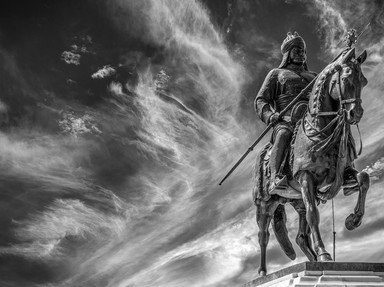Quiz Answer Key and Fun Facts
1. Which European country was founded in 1859 by the union of the principalities of Moldavia and Wallachia under Prince Alexander John Cuza?
2. In which year were the first Nobel Prizes awarded?
3. Sir Robert Walpole, Britain's first 'de facto' Prime Minister, was appointed under which monarch?
4. The king of which African country was deposed in a coup d'etat by army officers in 1969 whilst he was visiting Turkey for medical treatment?
5. Widely recognized as one of the most significant scientists of classical antiquity, in which century did Archimedes live and work?
6. Who was the first and, at the end of the 20th century the only, U.S. President who to have graduated from the United States Naval Academy?
7. Which national leader, who ruled for more than four decades, was born Tafari Makonnen Woldemikael in 1892?
8. The second imperial dynasty, who ruled China for most of four centuries, from 206 B.C. until 220 A.D.?
9. Which country became the world's smallest republic when it gained independence in 1968?
10. Who was the only pre-20th century US President to live into his 90s?
Source: Author
EnglishJedi
This quiz was reviewed by FunTrivia editor
bloomsby before going online.
Any errors found in FunTrivia content are routinely corrected through our feedback system.

